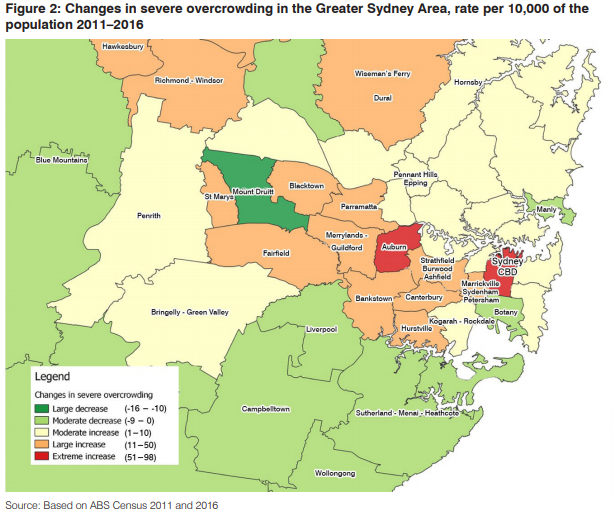
AHURI research on overcrowding in NSW aims to inform government policy approaches
The research was commissioned by the NSW Department of Communities and Justice to inform homelessness strategy
12 May 2021
The NSW Department of Communities and Justice (DCJ) commissioned research by AHURI on overcrowding as part of the implementation of the NSW Homelessness Strategy 2018–2023. The research was undertaken in response to analysis showing an increase in homelessness in NSW with (severe) overcrowding being the main contributor. The report, Overcrowding and severe overcrowding: an analysis of literature, data, policies and programs, published in 2019, analyses the scale and scope of overcrowding and severe overcrowding, including trends, causes, impacts and what can be done to reduce its impact.
The research found that people experiencing overcrowding are not a homogenous group, and nuanced policy approaches and interventions are required. The key findings show that those experiencing severe overcrowding are different to those experiencing other forms of homelessness. They are most likely to be families, young people, Indigenous people and tertiary students and the majority of people living in severe overcrowding were born overseas with 71% of all severely overcrowded dwellings being rentals. Overcrowding and severe overcrowding are concentrated in Sydney, particularly the suburb of Auburn, and to a lesser degree the inner city and south western suburbs.

To address overcrowding and severe overcrowding, the research offers the following approaches:
- Working with key groups affected - Severe overcrowding could be addressed by working with key groups affected and those that are well placed to represent their interests.
- Better access to housing - A lack of appropriate and affordable housing is a key driver of overcrowding.
- Programs to enable people to transition out of overcrowding - program development to enable people to transition out of overcrowding into more appropriate housing, including culturally tailored and targeted programs.
- Regulation - review of legislation, regulations and compliance in combination with measures which address underlying causes and increase availability of alternative accommodation.
- Education - education to key groups around tenancy rights and the rental market, and the provision of outreach/case management support for people at risk and with special needs.
This research was conducted as a custom-designed research service for the NSW Department of Communities and Justice as part of AHURI’s professional services offerings. Through the expertise of our team of social researchers, economists and policy specialists in qualitative and quantitative analysis, strategic planning and policy development, AHURI works with clients to understand and define problems, then develop solutions that meet their needs.
To discuss how your organisation can benefit from AHURI’s professional services, contact Dr Tom Alves, Head of Development (tom.alves@ahuri.edu.au, 0417 244 623).
AHURI is funding further research into overcrowding as part of the 2020 National Housing Research Program. The research, How many in a crowd? Assessing overcrowding measures in Australian housing, aims to produce small area estimates of the ‘at risk of homelessness’ population in Australia in order to assist policy makers and stakeholders at local and regional levels in developing homelessness prevention strategies.
